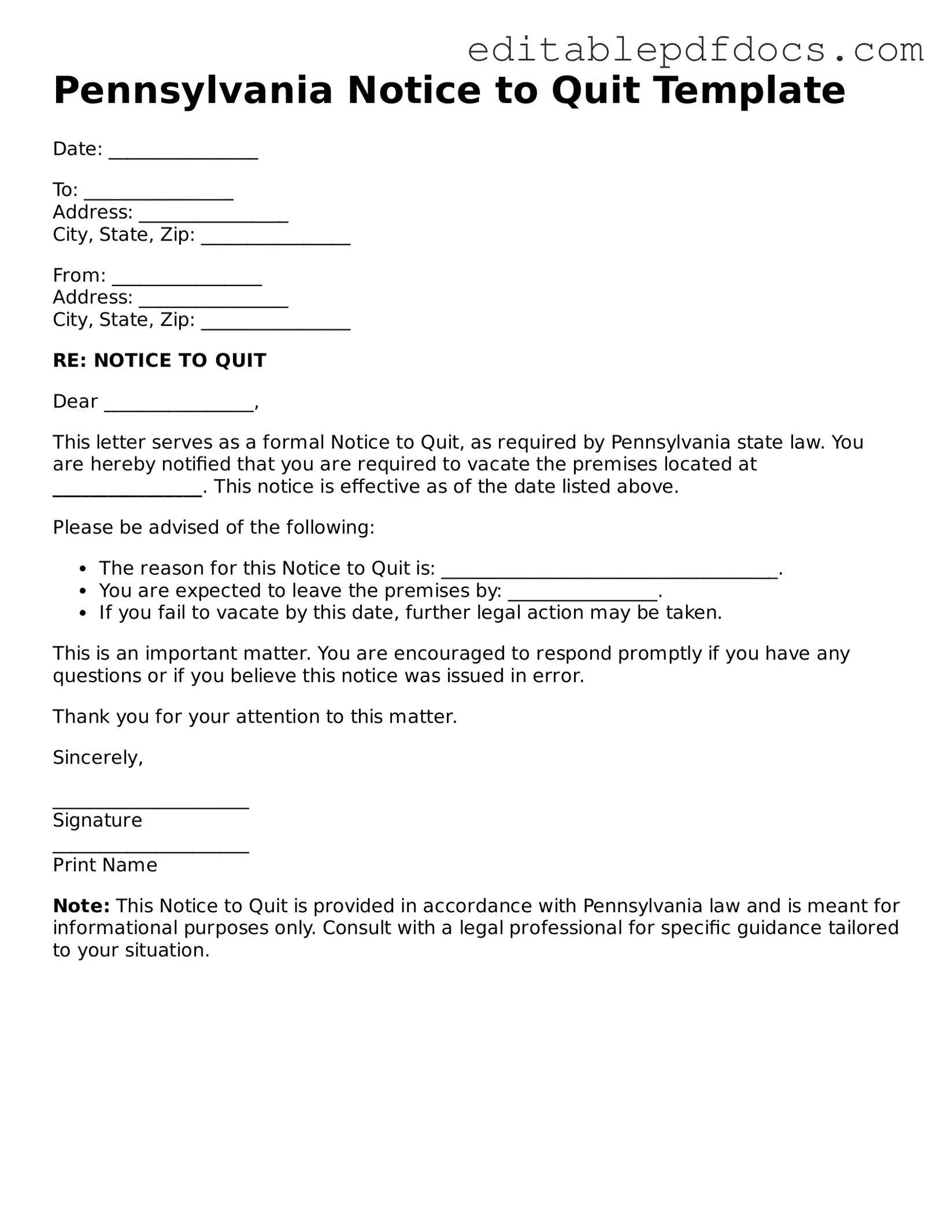Completing the Pennsylvania Notice to Quit form requires careful attention to detail. One common mistake is failing to provide the correct address of the rental property. The form must clearly indicate the location to avoid confusion. Omitting this information can lead to delays or complications in the eviction process.
Another frequent error involves incorrect dates. The form requires specific dates for when the notice is issued and when the tenant is expected to vacate. If these dates are inaccurate or not clearly stated, it may invalidate the notice.
People often neglect to sign the Notice to Quit. A signature is essential to validate the document. Without it, the notice may be considered incomplete and unenforceable.
Some individuals mistakenly assume that a verbal notice suffices. However, a written Notice to Quit is necessary under Pennsylvania law. Relying on verbal communication can lead to misunderstandings and disputes.
Additionally, using vague language can create issues. The form should clearly state the reason for the eviction, whether it’s for non-payment of rent or lease violations. Ambiguity can weaken the case and confuse the tenant.
Another mistake is not providing a copy of the notice to the tenant. Delivering the notice in person or via certified mail is crucial. Failing to do so can result in the tenant claiming they never received it.
People sometimes forget to check local regulations. While the Pennsylvania Notice to Quit provides a general framework, specific counties or municipalities may have additional requirements. Ignoring these can lead to complications.
Finally, individuals may not keep a record of the notice. It is important to document when and how the notice was delivered. This record can serve as evidence if the case goes to court.
